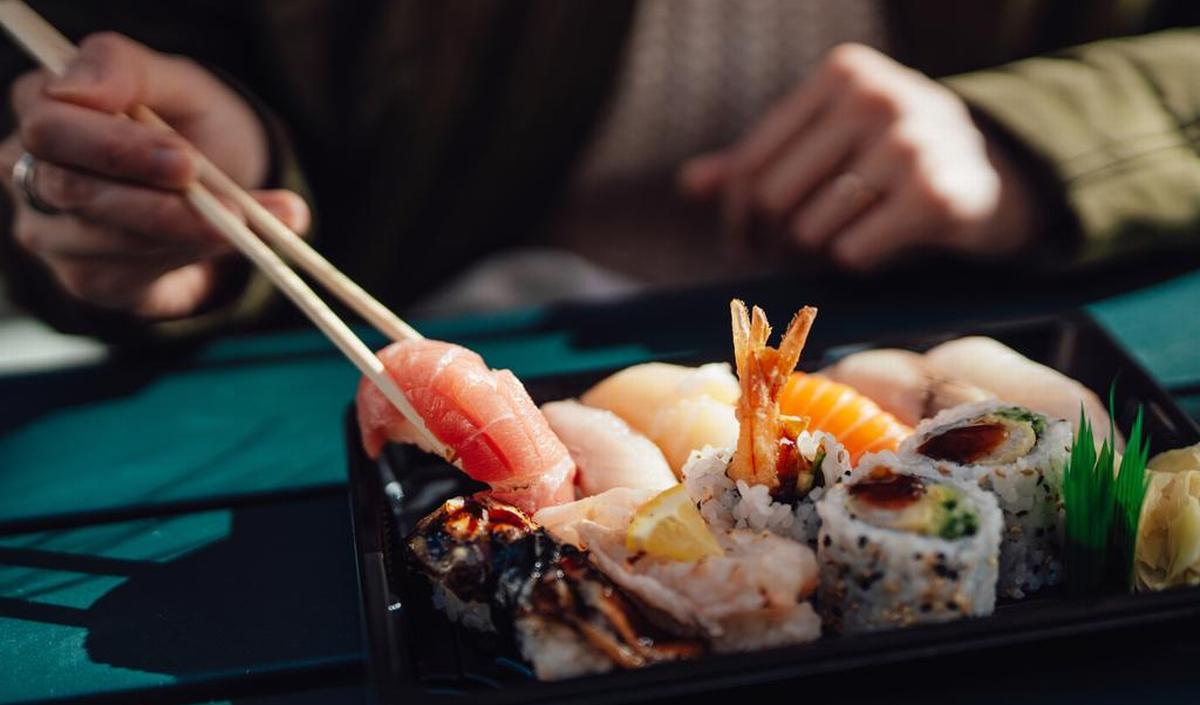In this article
Is sushi healthy?
dossier
Rice and fish are healthy, so sushi should score high on the health scale, you would think. Unfortunately, that is not always the case. Whether sushi is healthy or not depends on the preparation, the ingredients and how much you eat.
Also read: Can you eat sushi during pregnancy?
White rice: little nutritional value
© Getty Images
No sushi without rice. Rice for sushi is usually white rice that sticks together after cooking. Rice vinegar, salt and sometimes sugar are also added to the rice. White rice is a processed product and therefore contains little nutritional value. Eating carbohydrates from white flour or white rice is thought to be linked to health conditions such as obesity and type 2 diabetes. They cause spikes in blood sugar levels, which then lead to a hunger-inducing crash. So the message is to eat these products in moderation.
Sushi with brown rice is a healthier choice as it contains more nutrients. But you will hardly find this variant in shops, restaurants or takeaways. Sushi also contains too much rice – and therefore carbohydrates – compared to the proportion of vegetables and proteins. If you choose sashimi – thinly sliced fish or shellfish – you will get enough proteins.
Also read: How healthy is rice?
Fish and seaweed: source of proteins and omega 3
What does play in sushi’s favor: the ingredients from the sea. For example, the seaweed or nori used in sushi is a source of protein. In dried form, it even consists of a third of proteins. Seaweed also contains healthy fats, B vitamins, iodine and iron. Sometimes the amount of iron is even higher than in meat. Fish, a main ingredient in sushi, can also be considered a healthy food. Raw fish contains many omega-3 fatty acids that are good for your body and your memory. However, some types of fish, such as tuna and mackerel, contain a lot of mercury. If you choose tuna in your sushi roll, stick to one or two rolls, and preferably no more than once a week. Instead of tuna, you can also opt for a mercury-free alternative, such as salmon. Another side note when choosing food from the sea: raw fish, shellfish and crustaceans can be contaminated with bacteria such as listeria or salmonella that can make you very sick. to make. Fish sold for raw consumption should therefore be frozen for 24 hours to kill any parasites.
Also read: Food poisoning: symptoms and what to do?
Be careful with fat, salt and portion size
Some sushi varieties are fried. That makes them fat and calorie rich. Typical Western additions to sushi are mayonnaise and cream sauce, which are also quite fatty ingredients. In any case, stay away from crispy rolls. A rule of thumb if you want to keep it healthy: the purer and simpler your sushi roll looks, the better.
It may not be for everyone, but the ginger you’re typically served with sushi boosts the immune system as an antimicrobial and antiviral agent. It is a good source of potassium, magnesium, copper and manganese. Wasabi is full of antioxidants. It is better not to overdo it with soy sauce, because it contains a fair amount of salt.
Finally, consider portion size: eat no more than one roll or six pieces. If you are still hungry, opt for a (nori) salad or miso soup.
Also read: Are ginger shots healthy?
Sources:
Last updated: April 2024
Articles about health in your mailbox? Subscribe to our newsletter and receive a free e-book with healthy breakfast recipes.
Related articles
Related sections
2024-04-04 22:02:38
#sushi #healthy #health.be


